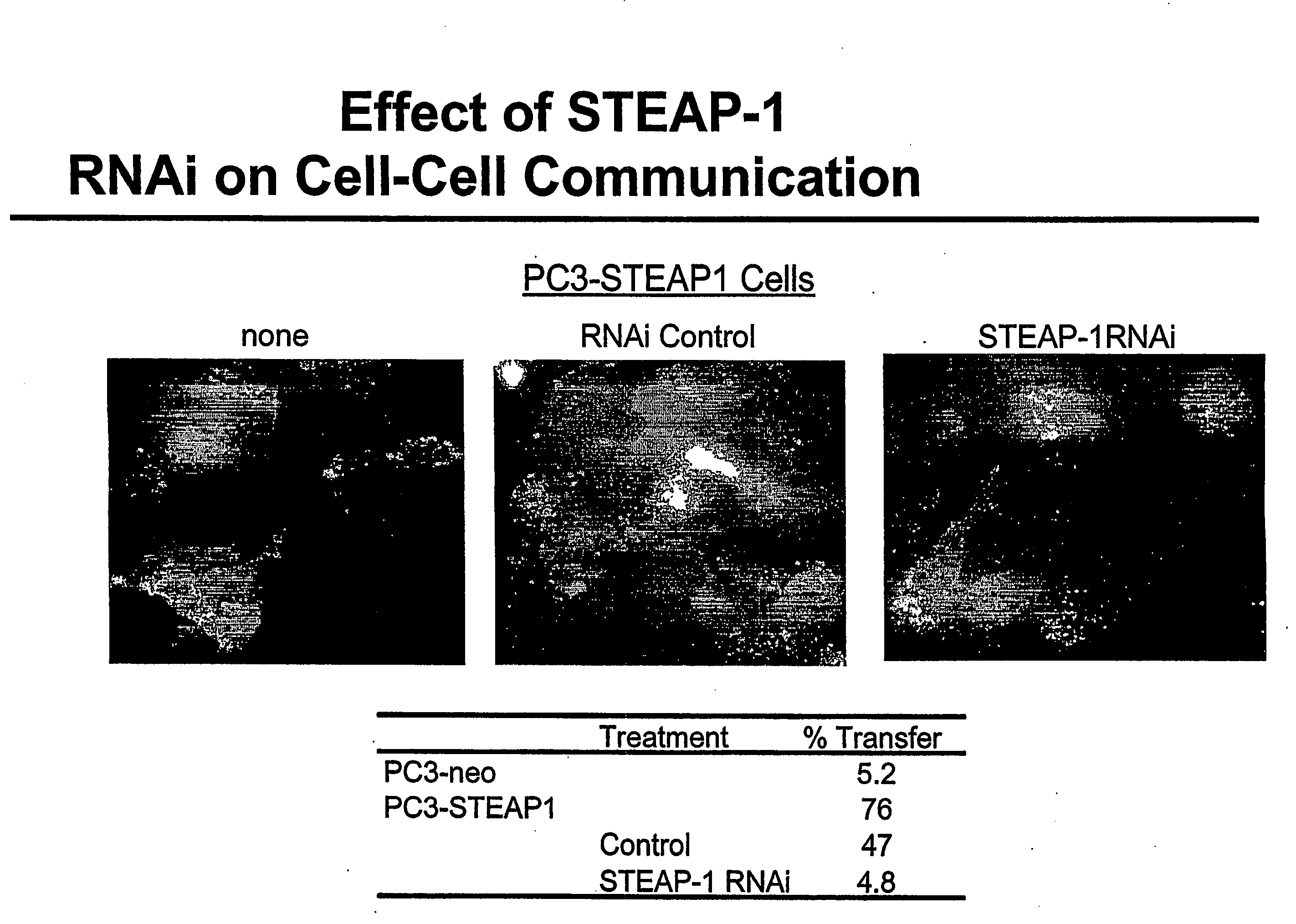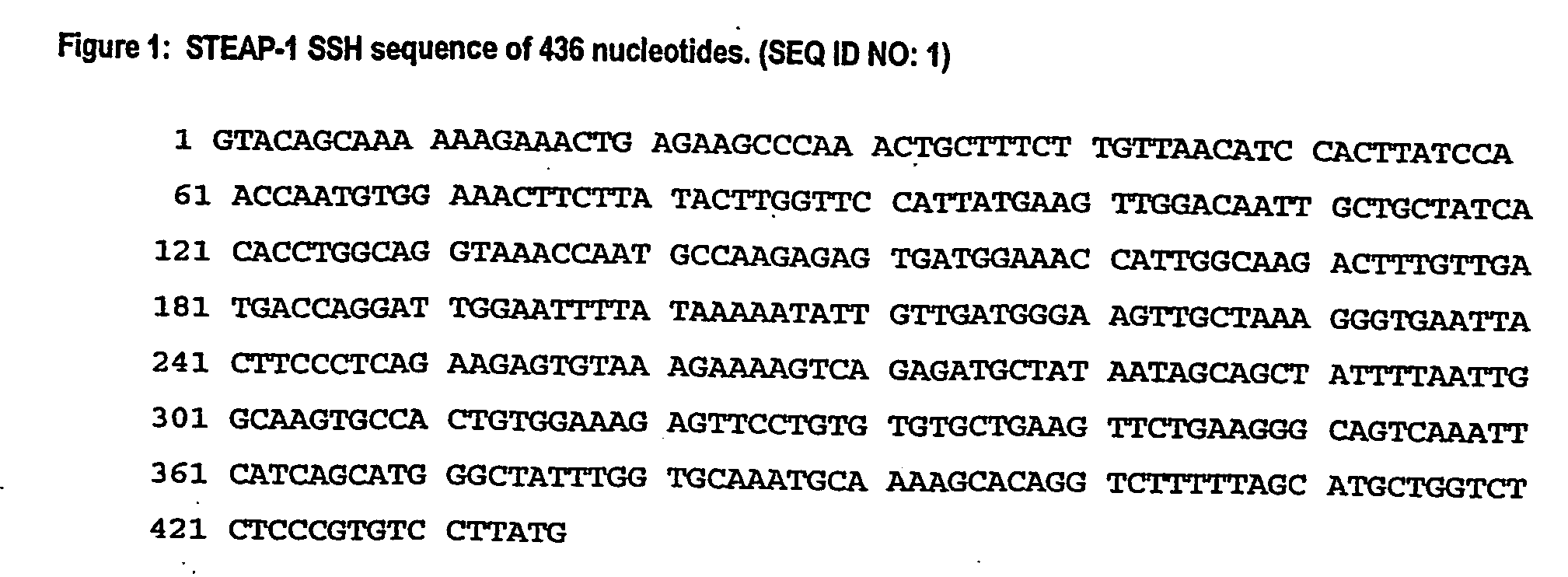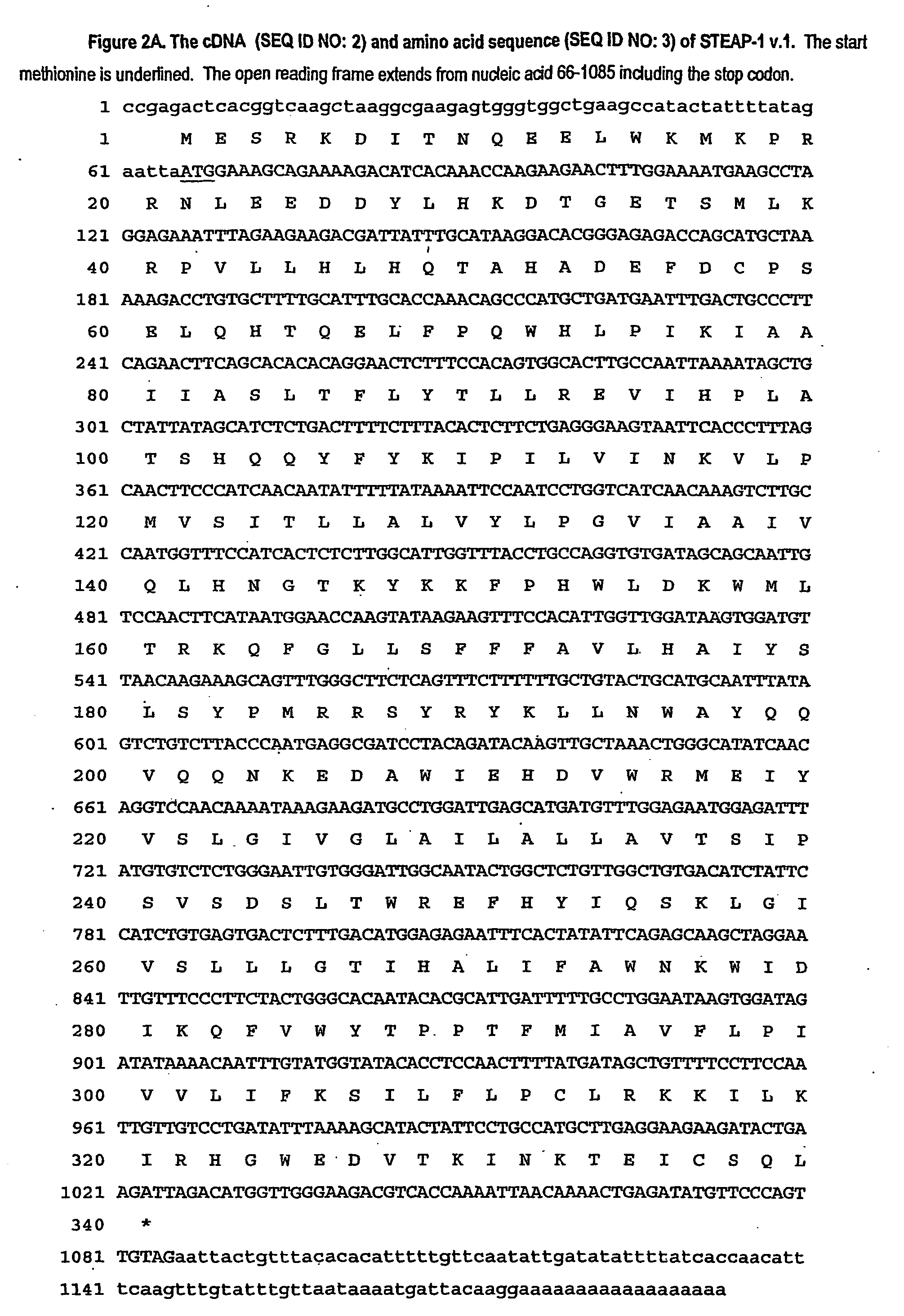Antibodies and Molecules Derived Therefrom that Bind to Steap-1 Proteins
a technology of steap-1 and antibodies, which is applied in the field of antibodies and molecules derived therefrom that bind to steap-1 proteins, can solve the problems of ineffective treatment of metastatic prostate cancer, undesirable consequences, and ineffective treatment for many
- Summary
- Abstract
- Description
- Claims
- Application Information
AI Technical Summary
Benefits of technology
Problems solved by technology
Method used
Image
Examples
example 1
SSH-Generated Isolation of cDNA Fragment of the STEAP-1 Gene
Materials and Methods
LAPC Xenografts:
[0638]LAPC xenografts were obtained from Dr. Charles Sawyers (UCLA) and generated as described (Klein et al., 1997, Nature Med. 3: 402-408; Craft et al., 1999, Cancer Res. 59: 5030-5036). Androgen dependent and independent LAPC-4 xenografts (LAPC-4 AD and AI, respectively) and LAPC-9 xenografts (LAPC-9 AD and AI, respectively) were grown in intact male SCID mice or in castrated males, respectively, and were passaged as small tissue chunks in recipient males. LAPC-4 AI xenografts were derived from LAPC-4 AD tumors and LAPC9 AI xenografts were derived from LAPC-9 AD tumors. To generate the AI xenografts, male mice bearing LAPC AD tumors were castrated and maintained for 2-3 months. After the LAPC tumors re-grew, the tumors were harvested and passaged in castrated males or in female SCID mice.
[0639]LAPC-4 AD xenografts were grown intratibially as follows. LAPC-4 AD xenograft tumor tissue gr...
example 2
Isolation of Full Length STEAP-1 Encoding cDNA
[0656]The 436 bp STEAP-1 gene fragment (See Example Entitled, “SSH-Generated Isolation of cDNA Fragment of the STEAP-1 Gene”) was used to isolate additional cDNAs encoding the 8P1D4 / STEAP-1 gene. Briefly, a normal human prostate cDNA library (Clontech) was screened with a labeled probe generated from the 436 bp STEAP-1 cDNA. One of the positive clones, done 10, is 1195 bp in length and encodes a 339 amino acid protein having nucleotide and encoded amino acid sequences bearing no significant homology to any known human genes or proteins (homology to a rat Kidney Injury Protein described in International Application WO98 / 53071). The encoded protein contains at least 6 predicted transmembrane motifs implying a cell surface orientation. These structural features led to the designation “STEAP”, for “Six Transmembrane Epithelial Antigen of the Prostate”.
[0657]Subsequent identification of additional “STEAP” proteins led to the re-designation of...
example 3
Chromosomal Mapping of STEAP-1
[0658]Chromosomal localization can implicate genes in disease pathogenesis. Several chromosome mapping approaches are available including fluorescent in situ hybridization (FISH), human / hamster radiation hybrid (RH) panels (Walter et al., 1994; Nature Genetics 7:22; Research Genetics, Huntsville Ala.), human-rodent somatic cell hybrid panels such as is available from the Coriell Institute (Camden, N.J.), and genomic viewers utilizing BLAST homologies to sequenced and mapped genomic clones (NCBI, Bethesda, Md.).
[0659]STEAP-1 maps to chromosome 7q21 using STEAP-1 sequence and the NCBI BLAST tool: (located on the World Wide Web at (.ncbi.nlm.nih.gov / genome / seq / page.cgi?F=HsBlast.html&&ORG=Hs)).
PUM
| Property | Measurement | Unit |
|---|---|---|
| fluorescent | aaaaa | aaaaa |
| bioluminescent | aaaaa | aaaaa |
| chemiluminescent | aaaaa | aaaaa |
Abstract
Description
Claims
Application Information
 Login to View More
Login to View More - R&D
- Intellectual Property
- Life Sciences
- Materials
- Tech Scout
- Unparalleled Data Quality
- Higher Quality Content
- 60% Fewer Hallucinations
Browse by: Latest US Patents, China's latest patents, Technical Efficacy Thesaurus, Application Domain, Technology Topic, Popular Technical Reports.
© 2025 PatSnap. All rights reserved.Legal|Privacy policy|Modern Slavery Act Transparency Statement|Sitemap|About US| Contact US: help@patsnap.com



